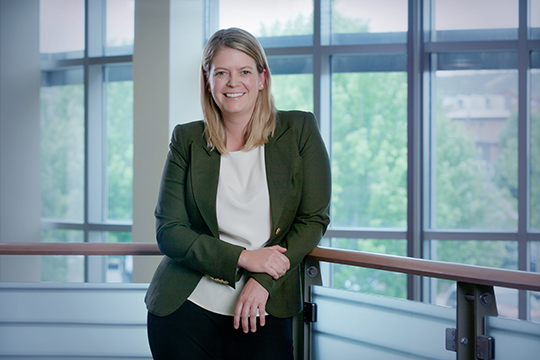
Joint pain is no fun, but solutions may be at hand (or knee, or hip)
Although a great number of Americans put up with arthritis, there comes a point when joint pain becomes a lifestyle burden and you throw in the towel and go see a specialist. What should that point be? Who should you see? What can they do for you?
Our specialists will begin to answer those questions here.
More than 50 million Americans — about one in every six of us — have arthritis, making it the top cause of disability in the U.S., according to the Arthritis Foundation. The two types of arthritis stem from non-inflammatory causes (osteoarthritis, or wear and tear of cartilage) and inflammatory causes (mostly autoimmune diseases, of which rheumatoid arthritis is the prototype).
Inflammatory
Your local rheumatologist is Dr. Wendy Grant, who is presently the only such specialist in all of Southwest Colorado and Northern New Mexico. Her main office is in Durango, but she and Physician Assistant Erika Stensen maintain clinics in Ignacio, Towaoc, and Shiprock.
Rheumatoid arthritis is an autoimmune disease, which occur when the immune system attacks cells or tissues as if they’re a threat, and this attack continues unabated. If you experience joint swelling for more than six weeks, you probably need to get it checked out, Dr. Grant says.
Rheumatoid arthritis cases make up about 70 percent of Dr. Grant’s patients, but she can list a dozen or more other less-common rheumatic diseases such as gout and psoriatic arthritis that she also treats.
The key in successful treatment is identifying it early and preventing joint damage that can occur over time.
Rheumatology is a multi-organ specialty, so these diseases are not limited to the joint.
What triggers these diseases is unclear – “we wish we knew,” Dr. Grant says – but there is likely a genetic predisposition plus a trigger. Smoking is definitely a trigger. Also, stressors such as psychological, physical, and environmental are potential triggers.
Biologic therapies are directed at turning down the body’s immune response. Fortunately, these medications can target specific parts of the immunesystem. Finding the correct medication for each patient is the “holy grail” of rheumatology, but Dr. Grant feels blessed that there are many to choose from.
She marvels at the strides made in her field. Before the 1980s, a rheumatologist’s office was cluttered with patients in wheelchairs. Doctors prescribed large doses of aspirin. In the mid-1990s, when Dr. Grant entered the field, an explosion of biologic therapies occurred. Now, it’s rare to see someone totally disabled by rheumatoid arthritis
It’s also important to eat right and get proper exercise. Physical activity, Dr. Grant says, is “a drug with no side effects.”
Osteoarthritis (non-inflammatory)
Half of all arthritis cases of any type are osteoarthritis, which occur when cartilage breaks down in a body joint. Most commonly it affects knees, hips, lower back and neck, finger joints and the bases of the thumb and big toe.

Dr. Paige Mallette, Orthopedic Surgeon with Mercy Orthopedic Associates, says that osteoarthritis can be caused, over time, by obesity, injuries, changes in the anatomy, or simply general wear and tear. Some have a genetic predisposition to osteoarthritis, and obesity can hurry it along. Rheumatoid arthritis also can contribute to osteoarthritis.
Each patient has a different level of tolerance, and there’s not necessarily a correlation between what an X-ray shows and how much pain a patient is experiencing. As osteoarthritis worsens over time, cartilage breaks down, causing pain, swelling, and joint stiffness. Spurs may develop on the bones and may even break off, further impinging joint movement. When cartilage is gone and bone rubs on bone, pain often increases dramatically.
“If you have persistent, daily pain that is impacting your quality of life, I think it’s definitely reasonable to get it checked out,” Dr. Mallette says. If a physical exam and an X-ray or MRI (magnetic resonance imaging) shows there is arthritis, treatment options are fairly limited: either manage the condition, or get a new joint.
“There’s not a whole heck of a lot in between,” Dr. Mallette says. To avoid or delay osteoarthritis, she offers these tips:
- Maintain a healthy weight or lose weight to decrease stress on weight-bearing joints.
- Keep those joint muscles and ligaments strong with physical activity, whether it’s at the gym or walking around the neighborhood. “If you lose muscle tone,” Dr. Mallette says, “you load the joints abnormally with different forces.” Weakness and atrophy alter the mechanics of the joint.
- Stretching muscles and joints can improve flexibility and reduce pain. Yoga, for instance, may help.
- Medications are very low on Dr. Mallette’s list of treatments. They might help a bit with pain management, but none have been shown to help the underlying causes of osteoarthritis
More and more frequently, patients ultimately opt for knee or hip replacement surgery. This is a great last option to get you walking normally again, but the earlier you listen to what your joints are telling you, the better off you’ll be.
More information:
Arthritis Foundation: arthritis.org
American Academy of Orthopaedic Surgeons: https://orthoinfo.aaos.org
American Association of Hip and Knee Surgeons: https://hipknee.aahks.org





